As you probably know, the Free the Vaccine for COVID-19 Campaign was conceived of by the Center for Artistic Activism and Universities Allied for Essential Medicines mere weeks ago. We officially launched our first week of online training and activities last Wednesday, April 8th. Hundreds of activists, artists, and others from 29 countries joined Salk Squads in the Advocacy Innovation Labs online platform and gathered in regional groups.
Along with learning some basics about the politics and policies involved in fighting for access to medicines, we jumped right into the first “impossible mission.”
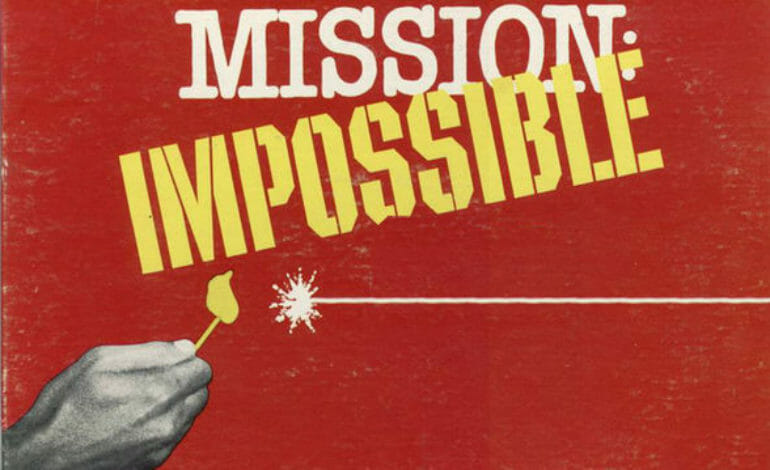
Highlights from Week 1 Mission: Get Press
For the very first mission for the Innovation Labs, participants were asked to get the Free the Vaccine for COVID-19 message on to traditional media: tv, newspaper or radio.
Why? Because:
- Boiling down the message of freeing the vaccine to something short and simple is helpful, so press picks it up and so the general public can understand it quickly. Also, finding an angle and press outlet that will work. Good for strategic thinking.
- This is a pretty straightforward (yet still challenging!) first action for a newly formed group to collaborate on.
- Initially it might seem ambitious, but through attempting the goal, so many participants realized quickly how achievable it is! Often the barriers are the ones we create for ourselves in our minds than in practice!
So, the mission was to get the Free the Vaccine for COVID-19 message on tv, newspaper or radio.
How’d it go?
Newsday featured UAEM North America’s Executive Director, Merith Basey, initiated by Salk Labs mentor Rachel Reid. The interview amplified our message about the importance of a universally affordable COVID-19 vaccine to the BBC World Service’s audience of 319 million listeners weekly worldwide.
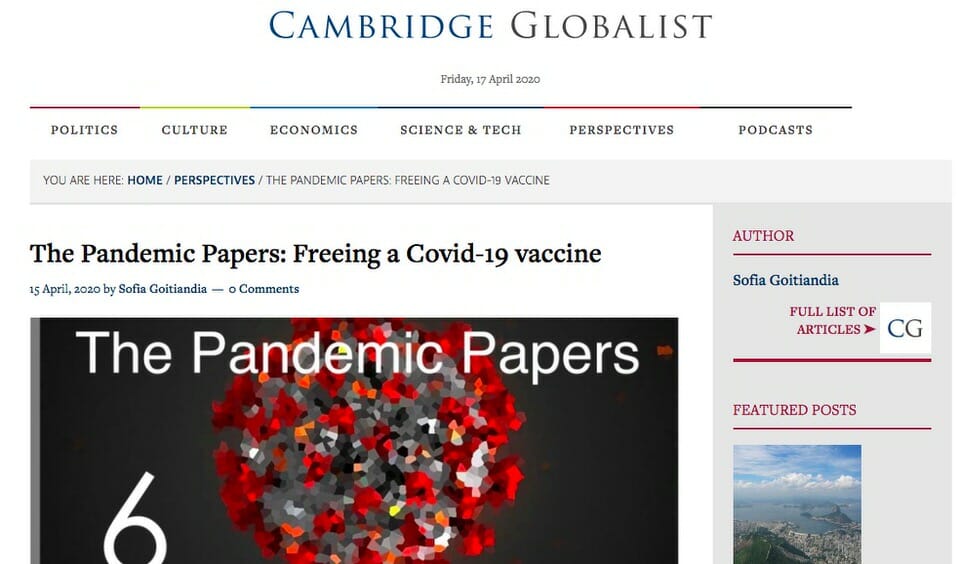
In the UK, medical student Sofia Weiss-Goitiandia spoke about the campaign on her university’s radio show, in addition to publishing an op-ed in the Cambridge Globalist.
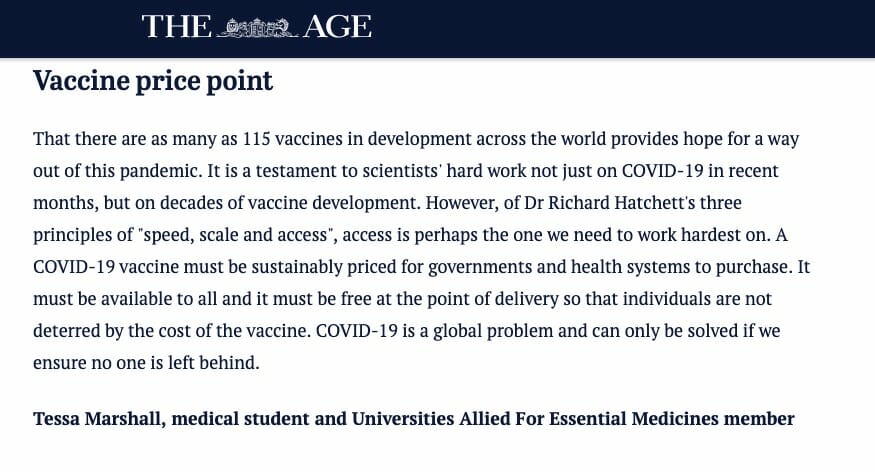
In Melbourne, medical student Tessa Marshall got the message out with a letter to the editor in The Age.
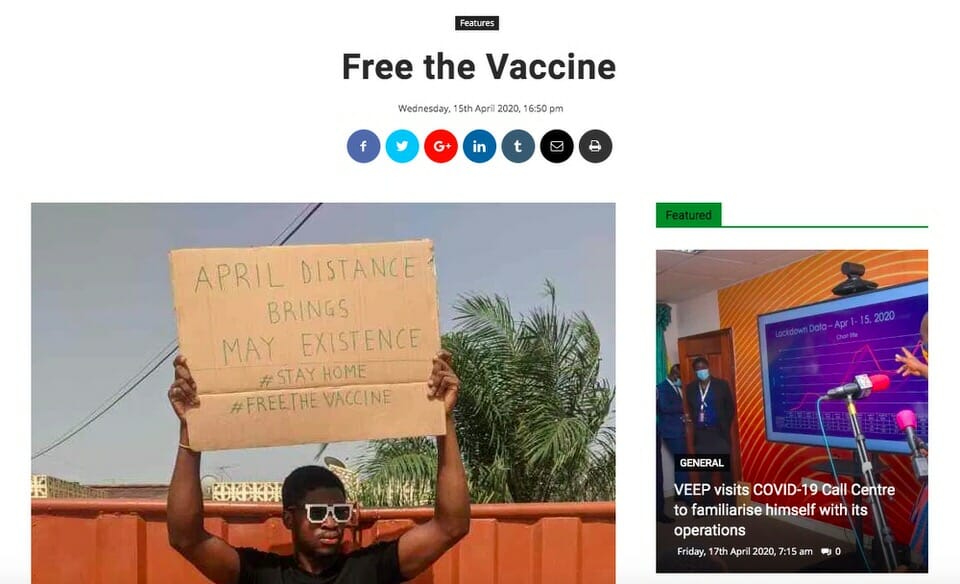
In Accra, Ghana, creative activist Prince Andrew Ardayfio’s solo protest was featured on the Ghana Broadcasting Company (GBC) online.
Minnesota-based Jena Martin pointed out that our launch this week also marked the anniversary of Jonas Salk’s polio vaccine being declared safe and effective on April 12th, 1955. She wrote a letter to an editor of her local paper about that.
Jena’s post inspired law student Louise Kyle in Ottawa to publish an op-ed in the Tyee.
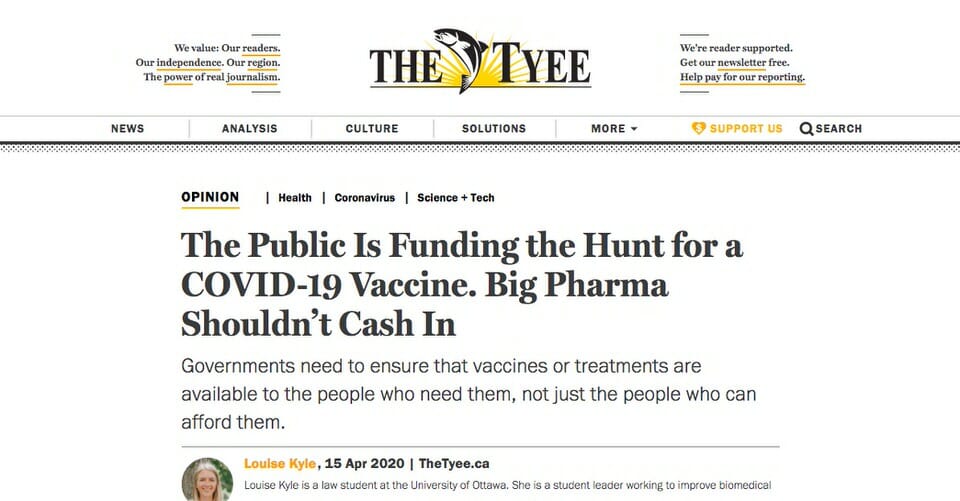
Other participants connected with their local radio shows, contacted journalist friends-of-friends, found ways to get messages to national TV shows through social media, and generally found lots of creative ways to get to the press.
That’s just a sampling of the press and actions this week. Most important is that a community began to form online of people thinking about and planning strategically and creatively around how to make real impact on equal access to COVID-19 testing, treatment and vaccine.
As an illustration of that kind of learning, here’s what Sofia said about working on this week’s action:
It was scary!! But actually, a very worthwhile mission. When I first heard on Wednesday I really didn’t think I’d be able to get on the radio or in a newspaper. On a small scale (i.e., in my university town), I’ve managed to do both in one week – the article’s in press. I’m glad I pushed myself. It’s given me a new view on how I can advocate, and in what space of time.
And that’s what it’s all about.
Next week, the weekly mission will have an objective more ambitious, as we continue to work towards our campaign goal:
Ensure publicly-funded diagnostic tools, treatment, and the COVID-19 vaccine will be sustainably priced, available to all and free at the point-of-delivery.
What You Can Do: 5 Ways to Help Free the Vaccine
1. Located In the U.S.? Sign this Petition Demanding Access
Our U.S. Petition demands that government officials make vaccines and diagnostic tools for COVID19 developed with public funding in the U.S. available to all. As cases of COVID-19 continue to increase at an exponential rate, fighting for access to any publicly funded diagnostics, treatments, and vaccines is more important than ever before. You can help in this fight by joining UAEM, C4AA, and 13 other organizations, including Doctors for America and Oxfam America, by signing onto UAEM’s petition to HHS Secretary Alex Azar and the members of the White House Coronavirus Task Force. This virus knows no boundaries and access to the vaccine shouldn’t either. Please sign and share this petition— we need your solidarity and support today.
2. Work for a Research Institution or Know Someone Who Does? Check out the Open Covid Pledge.
3. Want to Support the Free the Vaccine for COVID-19 Campaign?
We are making this project happen without funding, and we would like to raise money to support the amazing people and projects. Please donate a few dollars (or more) through the non-profit Center for Artistic Activism, or tell us about foundations or funders who would be interested in supporting this effort.
4. Spread the Word!
The more people who join our mailing list, the more power the campaign will have as we roll out more actions in the coming weeks. Share our newsletter with friends and encourage them to sign up for it at freethevaccine.org. And share the #freethevaccine message on social media.
5. Share these Actions
We’re collecting actions happening around the world around COVID-19 issues of access to medicines and treatments. If you’ve seen or done an action, please share it with us. Here are a couple we’ve started collecting, and more are on our site here.
Salk Labs members around the world found unique ways to stage a collective protest while physically distancing.



The message is clear: going virtual doesn’t mean sacrificing our voice, and maintaining physical distance doesn’t mean sacrificing our unity. As the pandemic continues, we are determined that regardless of where they live or how much money they have, all people will be able to protect their health. We promise you our urgency, our action, and most importantly, our solidarity.
If you’re inspired to do your own actions, like reaching out to press, encouraging institutions to sign the Open COVID Pledge, or standing on the street like your own favorite movie character, please let us know! Send us a photo! We’re gathering a gallery of Access Champions from around the world and we’d love to include you in it!
Special Bonus!
For those of you not in this round of the Free the Vaccine for COVID-19 Innovation Lab, we want to give you a little taste of what we’re learning and applying to our action experiments.
We’re loving this talk about Craftivism by Sarah Corbett. She says brilliant stuff that is super useful when you’re planning a campaign and want to truly move people to act.
She gives an example of using a really creative, innovative tactic to change the minds of people in power, and the principles in use there are so relevant to this campaign. She talks about using humility and intrigue, and connecting to all the senses.
Check it out



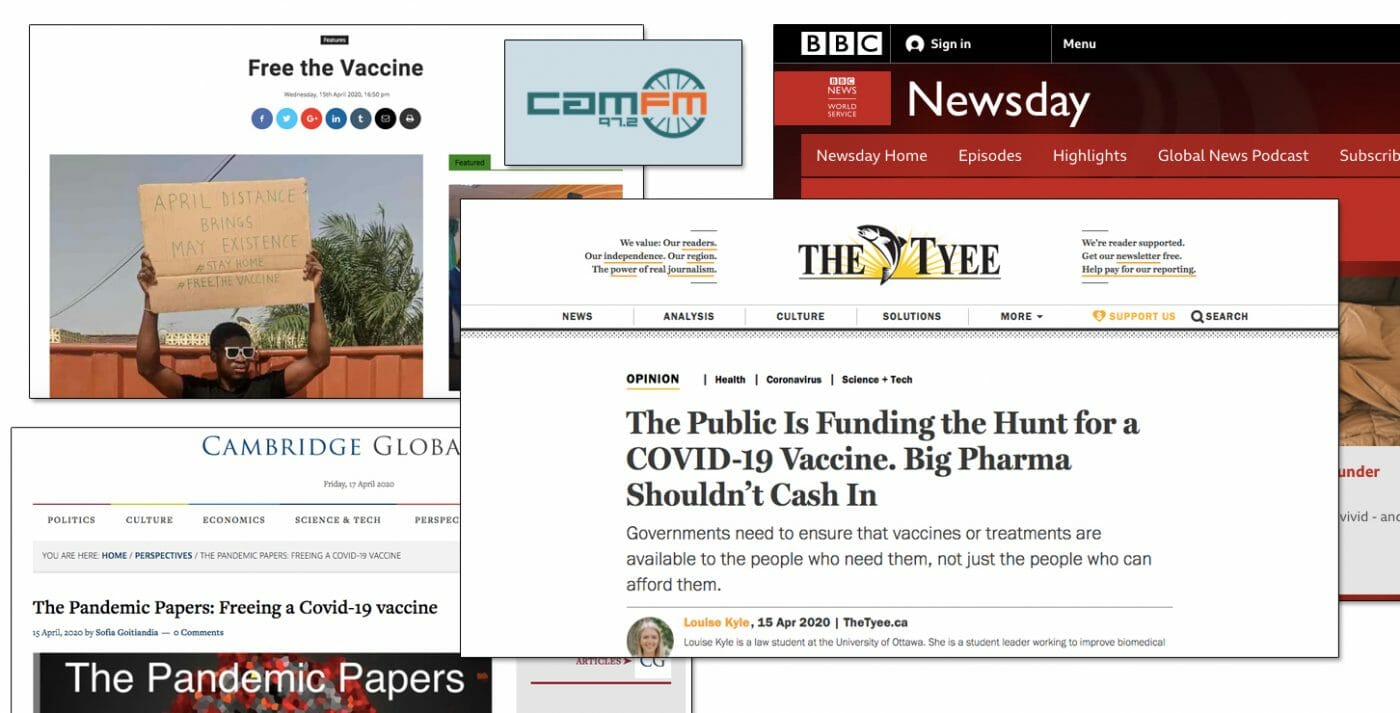
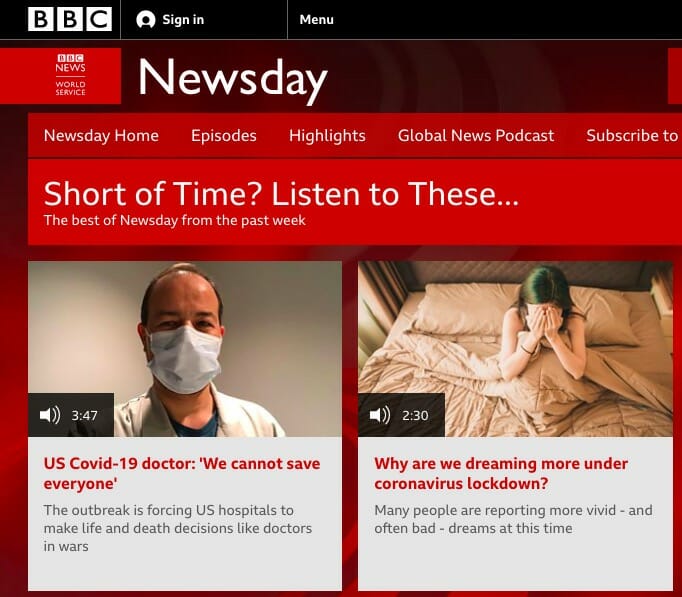
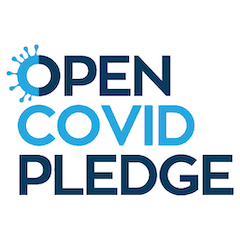

You must be logged in to post a comment.